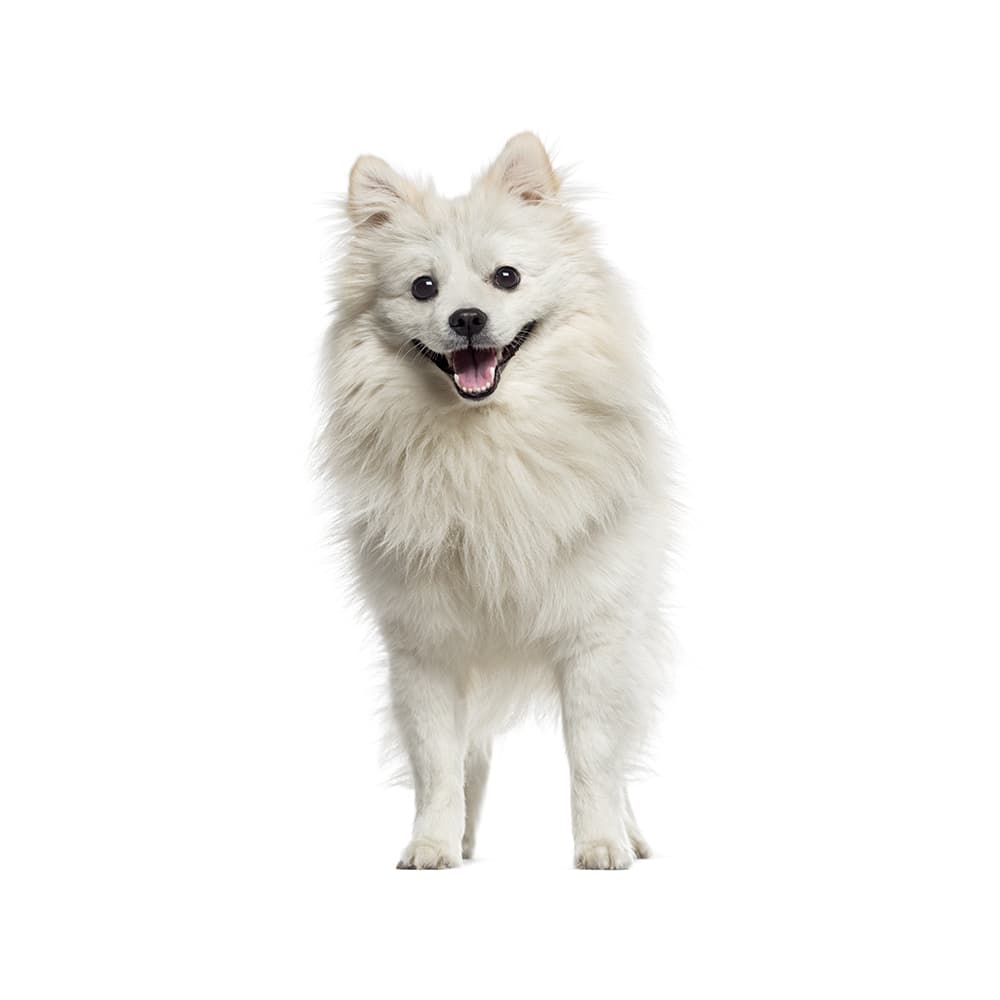Basepaws analyzes this breed as part of a group of other breeds.


Basepaws analyzes this breed as part of a group of other breeds.


Basepaws analyzes this breed as part of a group that also includes German Spitz, Keeshond, Pomeranian.
Despite being distinct in characteristics and origin, some pairs or groups of breeds lack the number of genetic differences required to distinguish these populations from one another, particularly when only a subset of these differences are inherited by a mixed breed dog. As we continue to expand our breed database, we aim to increase the resolution of our ancestry algorithm such that differentiating between increasingly specific ancestral sources becomes possible.

The German Spitz is one of the oldest dog breeds, with a history that dates back to antiquity. It was used as a watch dog by merchants who traveled throughout Europe and eventually evolved into several distinct breeds in different sizes, including the Keeshond, Pomeranian, and different varieties of German Spitz. They are most well-known in Germany where they were originally used for herding sheep, guarding property, and as companions. There is the Giant German Spitz (Gross spitz), Medium/Standard German Spitz (Mittlespitz), and the Small/Miniature German Spitz (Kleinspitz), which according to the Federation Cynologique Internationale (FCI), are considered different varieties of the same breed (in most countries).
The German Spitz is a generally healthy breed, but can suffer from albinism (oculocutaneous), progressive retinal atrophy, thrombopathia, and von Willebrand disease (Type I and II). For the German Giant Spitz, as a larger dog they are at risk for developing orthopedic problems, such as hip and elbow dysplasia. Genetic testing is recommended, including for the following additional conditions: hyperuricosoria, degenerative myelopathy, and progressive rod-cone degeneration.
German Spitz dogs are known for their lively, active, and alert nature. They are intelligent, versatile dogs with a strong instinct to guard their family and home. They are also known to be quite vocal, often barking to alert their owners of anything unusual. Despite their alertness, they are typically affectionate and friendly with their family, although they can often be wary of strangers. As with all breeds, their temperament can be influenced by a variety of factors, including heredity, training, and socialization.
A canine genetic lineage is a group of individuals or entire breeds that descended from common ancestors predating modern breed formation. Often these lineages are associated with a ‘type’ of dog with a unique historical working role and associated behaviors (e.g., herding, scent hunting, etc.).
Spitz and Sled Dogs originate in the Arctic and subarctic regions which caused them the develop adaptations to cold climates. Some of these adaptations give rise to characteristics of the lineage, most notably a dense double coat that helps with insulation. The lineage of these dogs can be followed back to ancient breeds developed by Indigenous people. These ancient breeds were used as an aid for transportation, herding, guarding, and hunting. These jobs have created dogs that are independent, intelligent and have strong work ethics as well as a sturdy body that helps them to pull sleds or go on long journeys over rough terrain.
Example breeds with ancestry from this lineage include Akita, Chow Chow, and Siberian Husky.
According to the AKC, the German Spitz breed rapidly declined at the beginning of World War I. The Spitz finally started to make a comeback starting around 1975, after several Keeshonds were imported from Holland and bred to larger Pomeranians.
German Spitz dogs are descendants of the "Peat Dogs" of the Stone Age, known as "Torfhunde" in German.
The United Kennel Club (UKC) states that the first documented reference to a spitz as a "valiant defender of his home and fields" is from the year 1450.
https://www.akc.org/dog-breeds/german-spitz/
https://vgl.ucdavis.edu/breed/standard-german-spitz https://www.fci.be/Nomenclature/Standards/097g05-en.pdf
Recommended by top vets with decades of experience
21 breeds
64 genetic health markers
50 genetic trait markers
